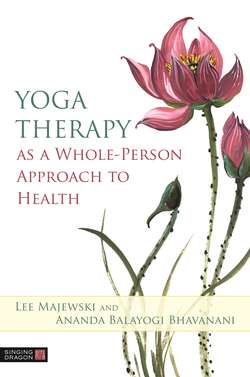Читать книгу Yoga Therapy as a Whole-Person Approach to Health - Lee Majewski - Страница 43
На сайте Литреса книга снята с продажи.
A note of caution
ОглавлениеAs yoga therapy starts to be introduced into mainstream healthcare, we must not fall into the dangerous trap of claiming that yoga is a miracle that can cure everything. Such statements do more damage than good—this “puts off” the modern medical community more than anything. They then develop a stiff resistance to yoga instead of becoming more open to this health-restoring science. As the use of yoga therapy in medical centers is still in its infancy, we must be cautious with our conscious and unconscious thoughts, words, and actions.
This is not to downplay the potentiality of yoga because it does have a role in virtually each and every condition. We must realize, however, that although yoga can improve the condition of nearly every client, it doesn’t necessarily translate into words such as “cure.” Modern medicine doesn’t have a cure for most conditions and so, when yoga therapists use such words, it creates a negative image that does more harm than good.
The need of the modern age is to have an integrated approach, one that is open to using the best from all traditional and modern forms of therapy. We must try to integrate concepts of yoga in coordination and collaboration with other systems of medicine such as traditional, complementary, and integrative (TCI) medicine, allopathy, Ayurveda, siddha, and naturopathy. Physiotherapy, osteopathy, and chiropractic practices may also be used with yoga therapy, as required. The advice on diet and adoption of a healthy lifestyle is very important irrespective of the mode of therapy employed for the client. US longitudinal research confirms this.27 Eleven thousand people were tracked for over 20 years, concluding that a healthy lifestyle can give women an additional ten years and men seven years of life free of cancer, heart problems and type 2 diabetes.
We need to always be rational and sensible in our approach to health, and realize that yoga therapy is not a magic therapy! It is not “one pill for all ills.” There should be no unsubstantiated claims made in this field. Yoga therapy is also a science and must therefore be approached in a scientific, step-by-step manner. It should be administered primarily as a “one on one” therapy that allows the therapist to modify the practices to meet the needs of the individual. It is not a “one size fits all” or “one therapy fits all” approach!
As human beings, we fulfill ourselves best when we help others. Yoga is the best way for us to consciously evolve out of our lower, sub-human nature into our elevated human and humane nature. Ultimately, this life-giving, life-enhancing, and life-sustaining science allows us to achieve in full measure the Divinity that resides within each of us.
In summary, yoga therapy is much more than a common yoga class. We have looked at the principles and modalities of yoga therapy and discussed its applications. We have touched on the yogic assessment of a client and how this differs from the medical model. Finally, we have pointed to the spiritual component of this ancient science. Spirituality today is still generally misunderstood as belonging to religion, and is an aspect of yoga therapy that is often underestimated or even neglected in a client’s journey to health. We feel that it is very important to start the discussion on the role of spirituality and the promise of spiritual transformation in yoga therapy as an important component of a client’s healing. So the next chapter is dedicated to spirituality in yoga therapy.
